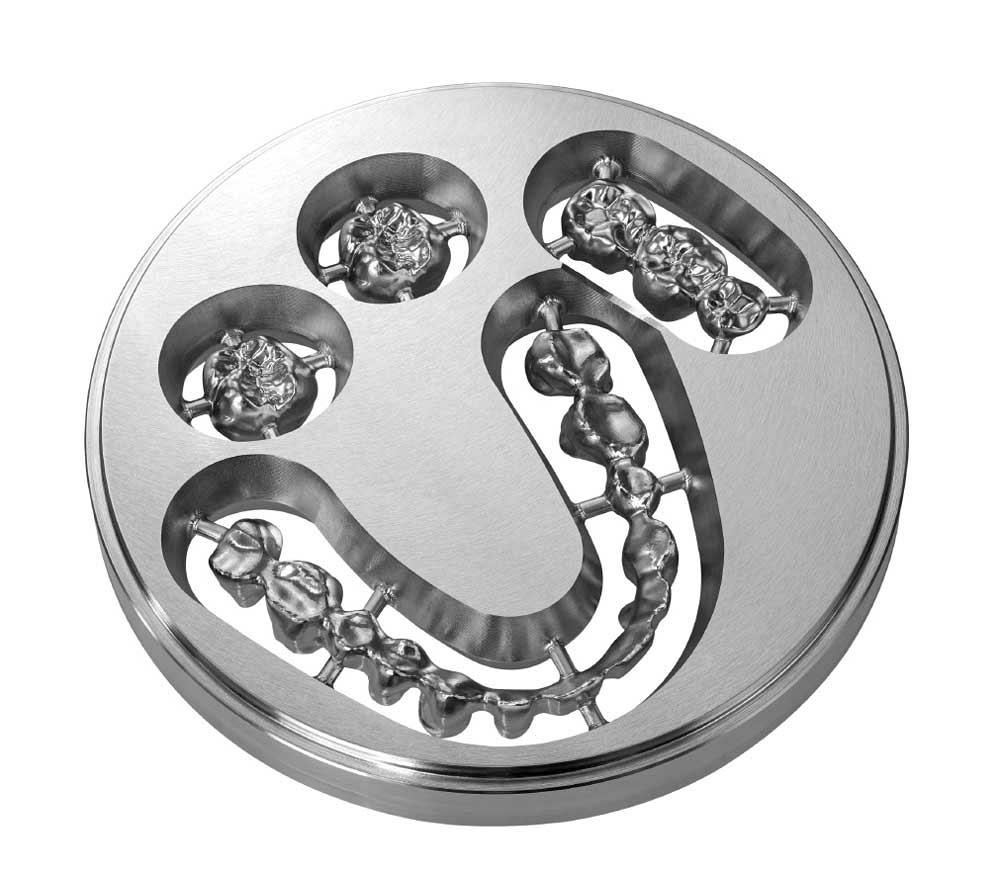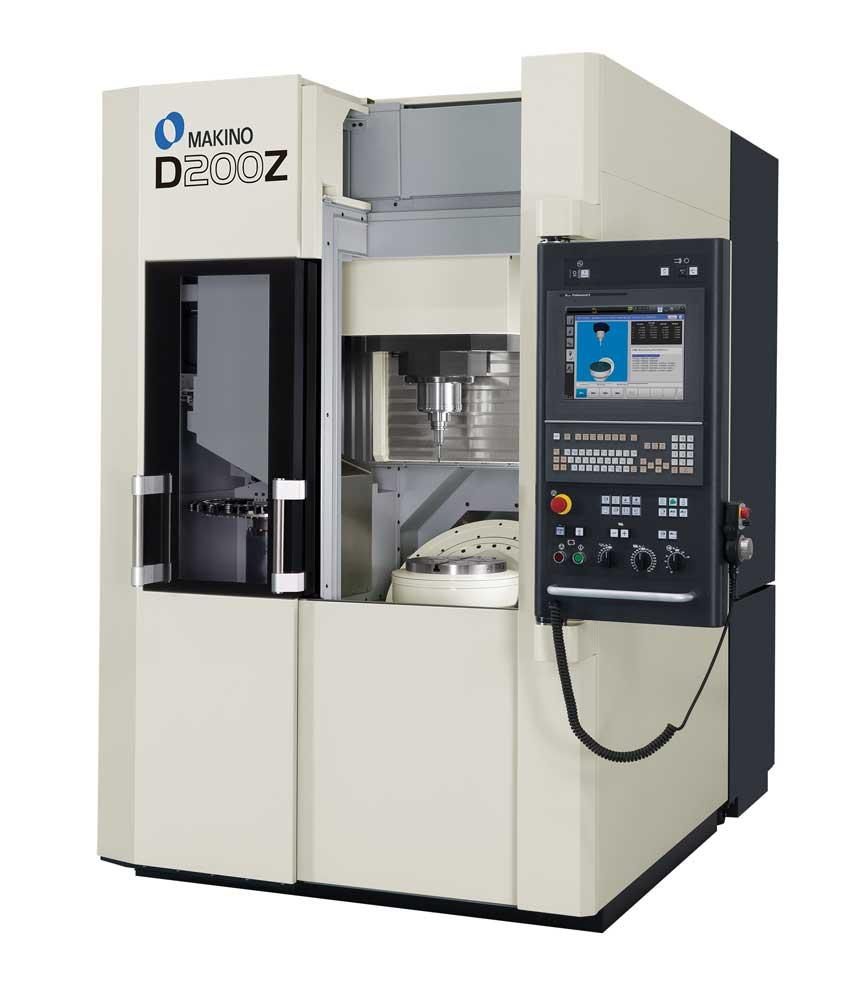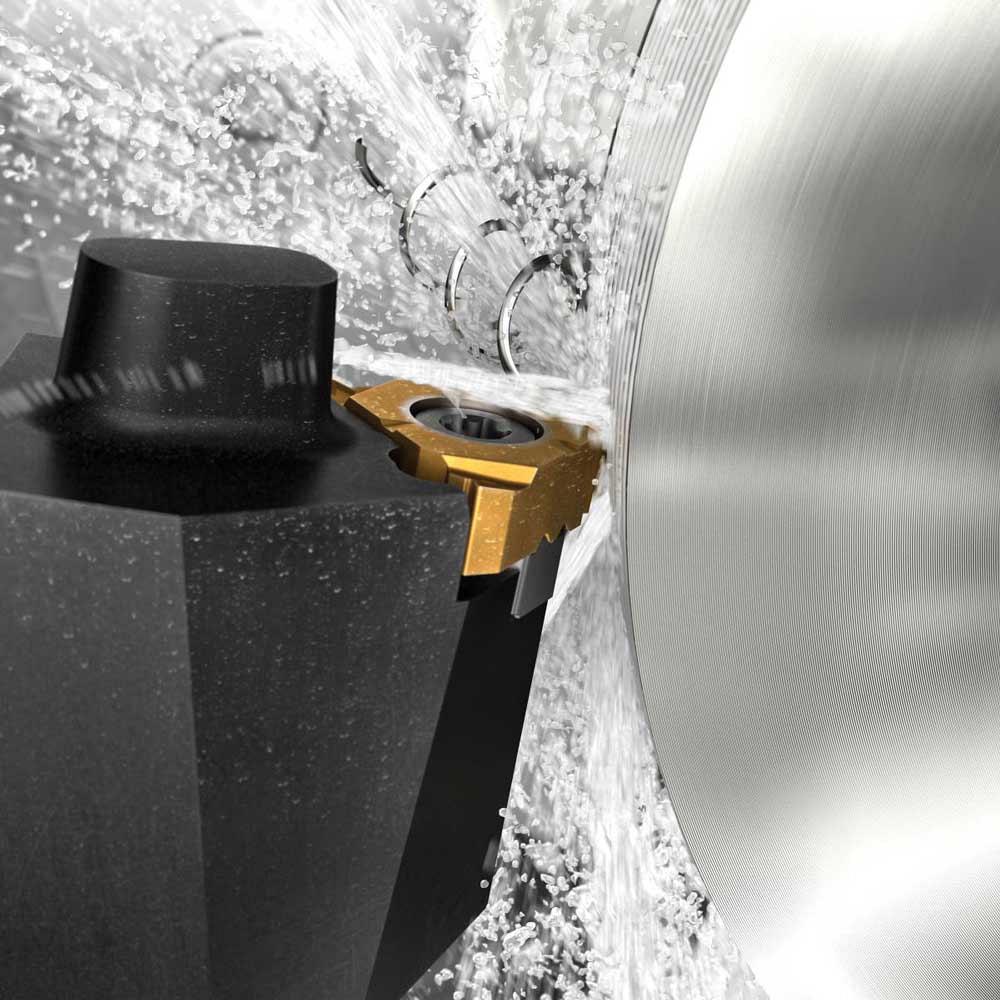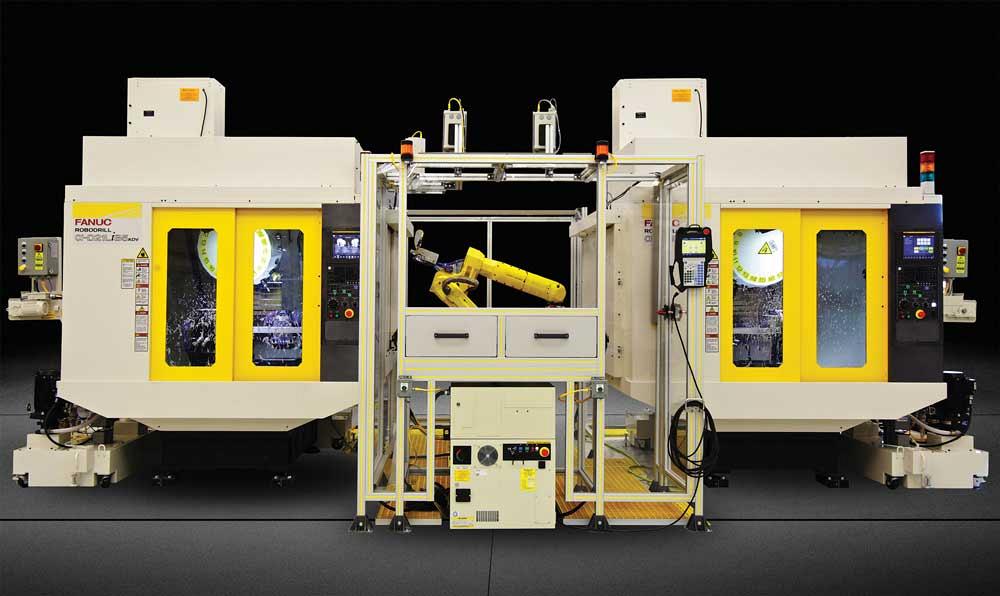- FMA
- The Fabricator
- FABTECH
- Canadian Metalworking
A look inside the technology that’s creating dental parts
Getting dental work done
- By Nate Hendley
- September 19, 2018
- Article
- Metalworking

Cutting must be done with small tools at high speeds to produce the very small, intricate features of today's dental implants. Photo courtesy of Makino.
Machining dental parts and products entails speed, tight tolerances, tough materials, and precision. In addition, the entire sector faces a new competitor in the form of 3-D printing, also known as additive manufacturing.
While ill-suited for doing large production runs, 3-D printing works well for some custom dental applications and might prove a contender to traditional subtractive machining methods in this field. For now, however, the dental parts equipment manufacturing market remains dominated by well-established traditional players.
“Most materials found in dental applications, such as titanium, cobalt chrome, and stainless steel, are (relatively) hard materials. Therefore, depending upon how the material is cut, it can require a machine tool with significant amounts of horsepower and torque,” explained William Howard Jr., product line manager, vertical machining centers at Makino.
These materials also tend to be abrasive, which can shorten tool life and damage the cutting edge.
Also, although they are relatively hard, these materials can become “gummy” during machining. This also makes them difficult to cut and can generate a lot of heat, which also shortens tool life and can create a poor surface finish. Furthermore, these materials can work-harden from this heat.
Finally, all of this cutting must be done with small tools at high speeds to produce the very small, intricate features.
Makino, for example, offers a pair of 5-axis VMCs, the DA300 and smaller D200Z, that it recommends to shops working on dental parts.
“There are a number of characteristics that make both the DA300 and D200Z machine very well-suited for the dental components market,” said Howard. “The speed of these machine dramatically reduces non-cut time and significantly reduces part cycle times, production lead times, and, consequently, costs. The machines support the high-speed machining [required for] the complex contours and shapes typical of dental components.”
Speedy spindles also make for outstanding surface finishes and longer tool life, he added.
Both machines are automated, use Makino Professional 6 Control with Super Geometric Intelligence 5 (SGI.5) software, and are designed to do precision work.

Machines need to support high-speed machining required for the complex contours and shapes typical in dental components. Photo courtesy of Makino.
Machining Demanding Materials
Dental parts are made from difficult-to-machine materials—understandable given they eventually end up in your mouth and are meant to last for years. Typical materials used include titanium, cobalt, and stainless steel.
“The materials used in the dental market provide unique challenges. They are harder, less forgiving, and do not respond well to improperly applied cutting techniques, such as not using high-speed machining and inadequate machine movement (over-shooting),” said Howard.
As for the best way to face such challenges, Howard returns to the need for speed when making dental components.
“High-speed machining, which is high spindle speeds in combination with high feed rates and ‘steps’ designed to create the desired surface finish, is the most effective, efficient method to produce these types of parts,” he said.
Programming also is important in this type of manufacturing.
“Creating a quick and efficient toolpath also is a unique challenge in dental milling. The organic shapes that are unique to each part need to be quickly and efficiently programmed to minimize lead times and costs,” he explained.
Producing Dental Instruments
FANUC is another company that has developed machines with the dental sector in mind. The company’s CNC RoboDrill machining centres are suitable for producing precision dental instruments, among other medical products.
Standard features include a rigid design, intelligent human machine interface (iHMI), and 21-tool storage capacity.
“The design and construction of C-frame vertical machining centres lends itself well to a compact size, which, in turn, promotes high speed and precision. The BBT 30 spindle size is perfect for the small and precision tools needed for dental components,” said Bob Stafford, manager, RoboDrill segment at FANUC.
Since its introduction a few years ago, the machining centre has been upgraded and its dental machining capabilities enhanced.

Operations such as this threading process are critical to the production of dental parts. Photo courtesy of Sandvik Coromant.
“Higher speeds and precision [have been] achieved through overlap process optimization, high-speed and super-precision servo drive systems, temperature compensation, high-speed spindles and advanced controls for 3- to 5-axis simultaneous machining of complex shapes,” said Stafford.
It’s all about the speed and tight tolerances required by dental part machining.
Small Parts, High Speeds
Regardless of what company makes them, sliding-head machines are a good choice for dental part work, said Kevin Burton, turning products and industry specialist at Sandvik Coromant Canada.
This again is all about the high speeds and small part sizes, he said.
“The way the tools are utilized in the toolchanger, it’s very quick. With small parts, typically you need to be producing them much quicker than a large component. The design of sliding-head machines [allows] very quick manufacturing to [also] be efficient,” said Burton.
Sandvik Coromant’s new CoroThread™ 266 QS tool system comprises an assortment of shanks, boring bars, inserts, and holders that work well with sliding-head machines, said Burton. The tools are designed for inside diameter and outside diameter threading. When the right tool and the right machine are combined, it’s easier to maintain chip control, improve surface finish, and lengthen tool life when machining a part like titanium dental screws.
Coolant also can play a key role in the creation of parts for the dental industry. High-precision coolant—coolant delivery precisely designed to hit exactly where it needs to be on the cutting edge—helps with chip control and tool life.
“We have kind of rebranded [this concept] to high-precision coolant instead of high-pressure coolant, because I think it’s more critical to have precision coolant,” said Burton.
He suggests using inserts with ground geometry and PVD cutting tool coatings when working on dental parts.
The Next Generation
While 3-D printing isn’t up to the task of full production, it’s well-suited for creating some of the custom-made products common to the dental field. In addition, the equipment involved is small enough to fit in a typical dental lab or office.

Machines with high-speed spindles, advanced controls, and a rigid structure are necessary for shops wanting to get into this segment of the medical manufacturing industry. Photo courtesy of FANUC.
Stratasys, a developer of this technology, offers 3-D printers specifically designed for doing precision dental products. These include the Stratasys J700 Dental™ (which specializes in producing clear aligner arches) and the Objet Eden260VS Dental Advantage (which make crowns and bridges).
With a scan of a patient’s mouth as a guide, these machines print dental products layer by layer. The 3-D printers use various materials for such tasks, including biocompatible photopolymers.
In any case, 3-D printing only occupies a small niche within the dental manufacturing sector at present. Industry experts are divided on the impact this technology will have on the sector in the future.
“It is very hard to gauge the impact of emerging technologies at this point in time. There are many techniques vying for the dental market production, including 3-D printing,” said Howard. “I think that there are certain types of dental products and materials, however, that may not lend themselves to 3-D printing.”
That said, established machine and cutting tool companies are looking into 3-D printing, and some have already added this technology to their product line-up. When it comes to the dental sector, 3-D printing seems highly suitable for the customized nature of certain parts and products.
“Everybody’s mouth is different. I’ve had crowns. They take a mould and then they make a crown from that mould. Now what they do, they scan it, print it, and it is done. This is a trend I think for these types of custom-made products. Right now 3-D printing is not to the level of high-volume manufacturing, but for custom stuff, I think it’s definitely on the upswing,” said Burton.
Dental Parts? Use High-speed machining
Using high spindle speeds, for example between 20,000 and 30,000 RPM, facilitates the taking of smaller chip loads/cutting passes. It also enables machinists to increase the feed rate. This approach has two main benefits:
1. It minimizes the amount of material removed per pass, but dramatically increases the speed of the passes.
2. It reduces the horsepower and torque required for any given cut, reducing the heat generated in the cutting zone. Furthermore, because of the speed of the cutting action, heat tends to go into the chip and not the base material.
High-speed machining also:
- Reduces the “gumminess” of the material.
- Reduces work-hardening.
- Reduces cycle time.
- Improves part feature accuracy and quality.
- Improves surface finish.
Contributing writer Nate Hendley can be reached at nhendley@sympatico.ca.
FANUC, www.fanucamerica.com
Makino, www.makino.com
Sandvik Coromant Canada, www.sandvik.coromant.com
Stratasys, www.stratasys.com
About the Author
Related Companies
subscribe now


Keep up to date with the latest news, events, and technology for all things metal from our pair of monthly magazines written specifically for Canadian manufacturers!
Start Your Free Subscription- Industry Events
Automate 2024
- May 6 - 9, 2024
- Chicago, IL
ANCA Open House
- May 7 - 8, 2024
- Wixom, MI
17th annual Joint Open House
- May 8 - 9, 2024
- Oakville and Mississauga, ON Canada
MME Saskatoon
- May 28, 2024
- Saskatoon, SK Canada
CME's Health & Safety Symposium for Manufacturers
- May 29, 2024
- Mississauga, ON Canada




















